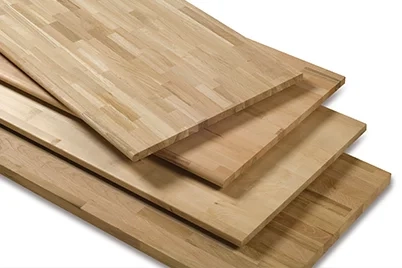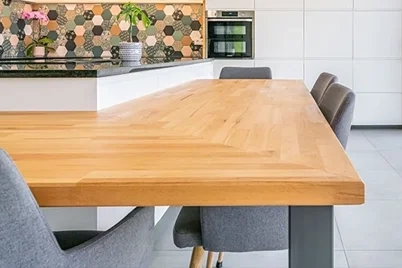Oil and wax
An oil or wax can protect the wood by acting as a saturator. These products are more or less liquid in state and will penetrate the wood fibres until they can absorb no more. Thus, your wood will not be able to soak up moisture and the deformations linked to moisture absorption can be reduced or even eliminated. Likewise, the wood can no longer be stained in depth and the aesthetics will thus be preserved.
In general, it is advisable to apply a minimum of 3 coats of finish to all the faces and edges of your panels in order to ensure total saturation of the fibres. Daily maintenance should be carried out using a very slightly damp sponge and a dry and clean cloth, taking care to avoid any stagnation of water.
The application of an oil, wax or woodstain will then need to be renewed once or twice a year to maintain the saturation of the wood (less if it is a woodstain).
Varnish
A varnish will protect the wood by acting as a shell. It will cover the surface of the wood and prevent any foreign body from entering it. The general practice is to apply two to three coats of varnish to all faces and edges of your panel, before installation. Maintenance is then carried out using a damp sponge and a new application of varnish will only be carried out when the first one is damaged (scratched, chipped varnish, etc.). The varnish is film-forming and flexible (it is water resistant and can flake off with age).
Woodstain
Lastly, a woodstain, being micro-porous, allows the wood to breathe. It is recommended for outdoor use, but should be avoided in humid environments such as kitchens and bathrooms.
Note: under the action of UV rays, all woods tend to lighten. We therefore advise you, if your project is exposed to UV rays and you wish to avoid this lightening, to use an anti-UV protective product.








